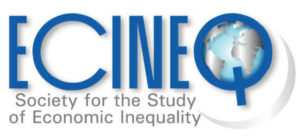Why wealth inequality differs between post-socialist countries?
Working Paper 2020-551
Abstract
We provide the first attempt to understand how differences in households’ socio-demographic and economic characteristics account for disparities in wealth inequality between five post-socialist countries of Central and Eastern Europe. We use 2013/2014 data from the second wave of the Household Finance and Consumption Survey (HFCS) and the reweighted Oaxaca-Blinder-like decompositions based on recentered influence function (RIF) regressions. Our results show that the differences in homeownership rates account for up to 42% of the difference in wealth inequality measured with the Gini index and for as much as 63-109% in case of the P50/P25 percentile ratio. Differences in homeownership rates are related to alternative designs of housing tax policies but could be also driven by other factors. We correct for the problem of the ‘missing rich’ in household surveys by calibrating the HFCS survey weights to top wealth shares adjusted using wealth data from national rich lists. Empirically, the correction procedure strengthens the importance of homeownership rates in accounting for cross-country wealth inequality differences, which suggests that our results are not sensitive to the significant underestimation of top wealth observations in the HFCS.
Authors: Michal Brzezinski, Katarzyna Salach.
